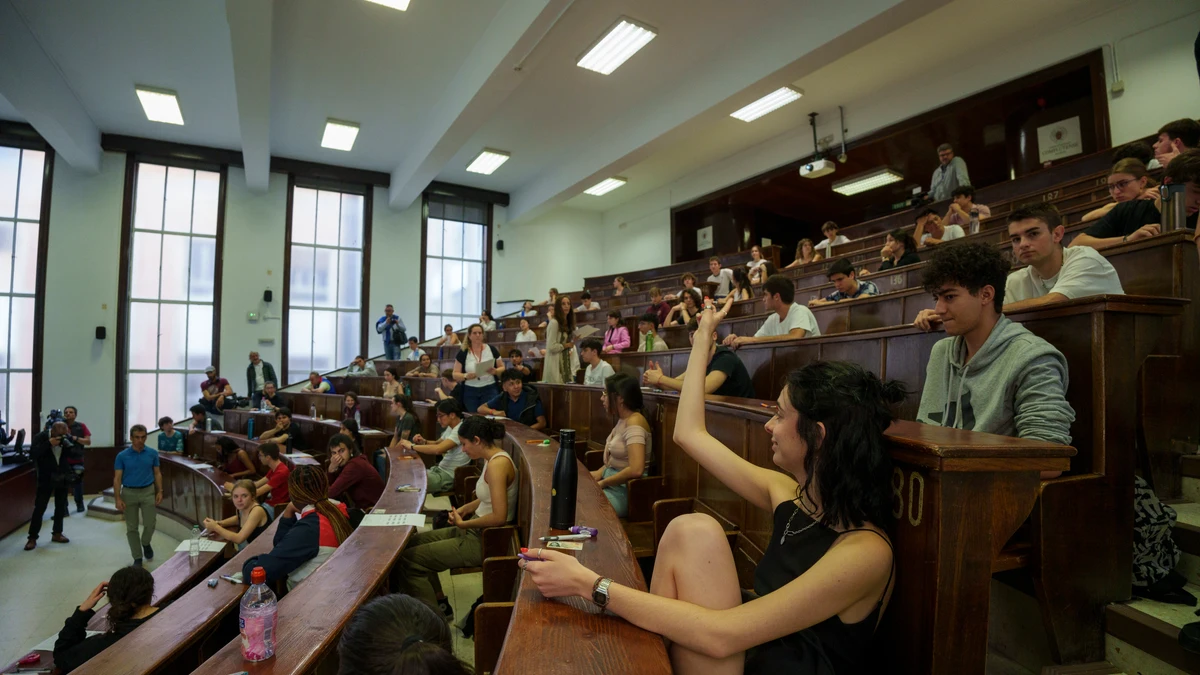Across the country, most high school classrooms still resemble their 20th century counterparts despite massive changes in the workforce over the past 50 years.
Today’s jobs require advanced skills and education or training, yet many graduates feel unprepared for their next steps.
A 2022 YouScience survey found three-fourths of high school graduates reported feeling moderately, slightly or not at all prepared to make college or career decisions after graduation. Roughly one-third of the survey respondents, who graduated high school between 2019 and 2022, said they were not following any planned educational or career path. A more recent survey of teens from EdChoice, a nonprofit focused on school choice, found that just 38% reported feeling extremely or very prepared for education beyond high school.
Thankfully, one state is leading the way when it comes to reimagining the high school experience and aligning it with current needs.
Following a vision set by Gov. Eric Holcomb, House Speaker Todd Huston and Secretary of Education Katie Jenner, education policymakers in Indiana recently proposed a high school redesign that will reshape how young adults experience the last years of their K-12 educational journey and set them up for real success as they transition to college or the workforce.
The Indiana proposal breaks down the high school redesign into three focus areas: diploma requirements that are more flexible and relevant to what students need in the real world; access to high-quality work-based learning opportunities; and an increase in the completion of high-value postsecondary credentials in high school.
In many states, current, decades-old requirements prioritize course completion and “box checking” over real-world skills and experiences. Under its new diploma framework, Indiana has proposed flexible, rigorous curricula that will ensure students master concepts needed for future success.
Indiana’s proposed “GPS Diploma Plus” includes course credit requirements that create more opportunity to personalize pathways with greater flexibility in how students meet required credits for core subjects. This creates more relevance between students’ courses and their chosen career paths.
Students also are allowed to earn credits via competency-based instruction, letting them demonstrate mastery of knowledge and content through projects and site-based learning, not just how much time they spend in a classroom.
The second of Indiana’s three focus areas is work-based learning, which refers to educational experiences that integrate academic knowledge and skills with real-world work experiences. Students engage in tasks or projects directly related to their field of study or future career goals. Often associated with more blue-collar internships, work-based learning can benefit all students. Indiana envisions a K-12 continuum that includes career exploration, engagement and experience, giving students hands-on opportunities to learn and develop.
High-value postsecondary credentials beyond high school diplomas are the third focus of the Indiana plan. These industry-recognized certifications validate job-specific skills, boosting graduate employability. Nationally, just 18% of credentials earned are in demand by employers, according to the research project Credentials Matter.
Indiana already has successful partnerships in place in some of its schools, examples that could be replicated in other states.
For example, a partnership among multiple school corporations in southwest Indiana and automaker Toyota is exposing students to advanced manufacturing production during their last two years of high school. Seniors get hands-on learning two hours a day, four days a week at a local Toyota facility and get paid for their training hours.
Indiana’s path is ambitious. It’s the first state to significantly tackle this challenge, with the goal of not just offering new diploma requirements but also ensuring students are getting the skills and experiences they need before they leave high school.
It will take time and collaboration to ensure employers, families, educators, school leaders and students understand the goals of this plan, but I believe the Indiana model will be one for other states to follow in years to come.
Jeb Bush was governor of Florida from 1999 to 2007. He is the founder and chair of ExcelinEd.
Submit a letter, of no more than 400 words, to the editor here or email letters@chicagotribune.com.




